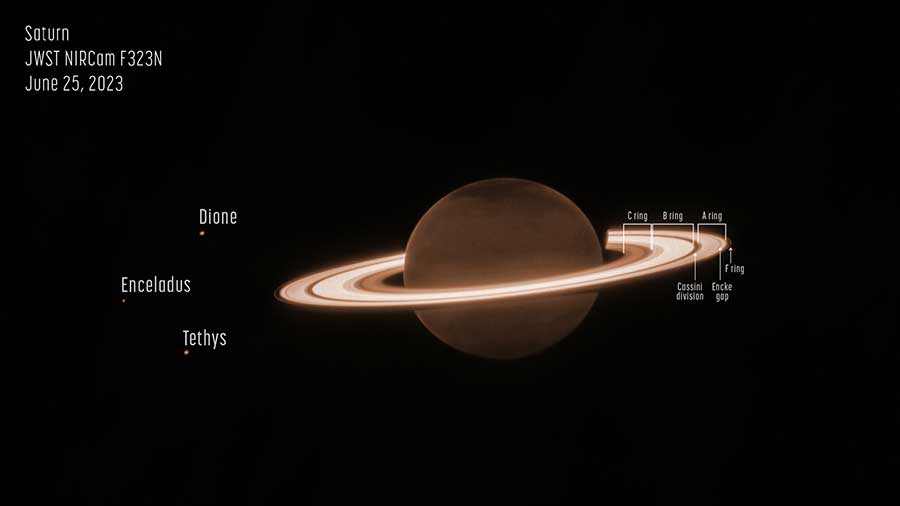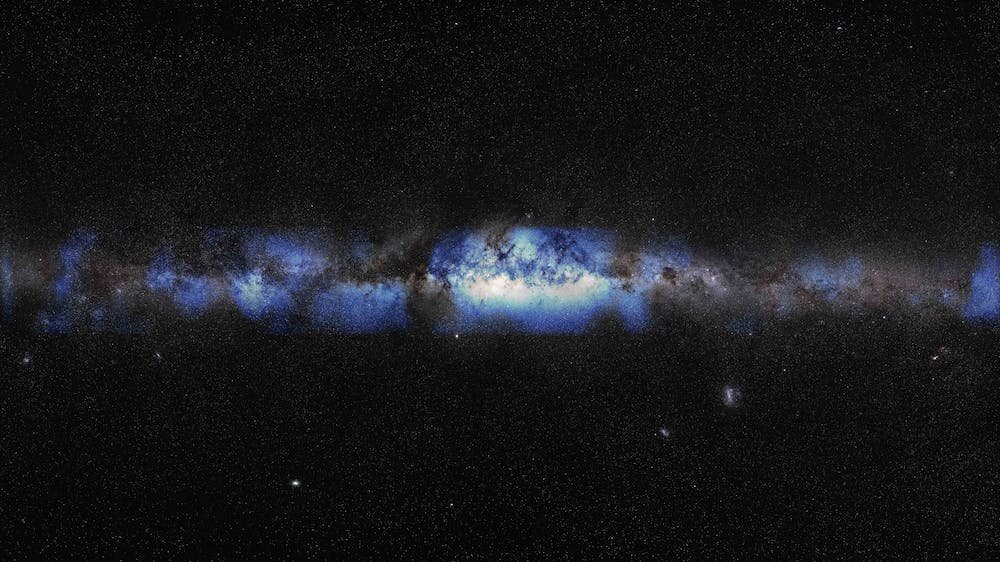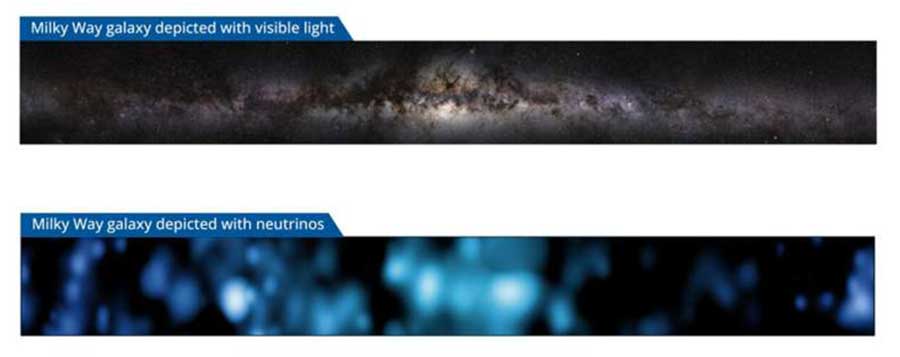The James Webb Space Telescope offers a new view of Saturn, while the IceCube Observatory has returned a neutrino-painted picture of the Milky Way.
Saturn's Ringshine

NASA / ESA / CSA / STScI / M. Tiscareno (SETI Institute) / M. Hedman (University of Idaho) / M. El Moutamid (Cornell University) / M. Showalter (SETI Institute) / L. Fletcher (University of Leicester) / H. Hammel (AURA); Image processing: J. DePasquale (STScI)
This near-infrared James Webb Space Telescope (JWST) image of the Saturn system sheds light on the objects' composition: Saturn is dark in this image because methane in its upper atmosphere absorbs infrared light at a wavelength of 3.23 microns. The icy rings, however, are unpolluted by methane and therefore remain bright.
The methane-absorbing wavelength doesn't pick up the stripes typical to Saturn photographs, which come from layering deeper inside the atmosphere. However, it does show expected seasonal differences between the northern and southern hemispheres; the northern hemisphere is experiencing summertime, while the southern hemisphere is emerging from darkness at the end of a winter. The darkness of the north pole is somewhat unexpected, though. Likewise, the surprising brightening at the limb suggests that methane also emits light (fluoresces) at high altitudes.
This image was taken as part of a program to investigate the Saturn system, including its rings and its moons. The fainter G and E rings are subjects of deeper exposures not shown in Webb's recent press release.
Read more about this image in the JWST press release. Research studies on these data will be forthcoming.
Neutrinos Paint Picture of the Milky Way

IceCube Collaboration / U.S. National Science Foundation (Lily Le & Shawn Johnson) / ESO (S. Brunier)
Our galaxy is home to asteroids, planets, stars, and dusty, star-forming clouds. It also hosts an exotic ecosystem of speeding charged particles known as cosmic rays, tangled magnetic fields, and teeny-tiny neutral particles called neutrinos.
Neutrinos are particularly ghost-like, making them difficult to detect. We've only recently begun to find astrophysical neutrinos using the IceCube Neutrino Observatory, which consists of more than 5,000 sensors set beneath the Antarctic ice. IceCube looks for the rare neutrinos that collide with our atmosphere, creating a cascade of charged particles. Ten years of observations yielded 60,000 high-energy neutrinos, of which 4,200 are astrophysical in origin. These neutrinos all cluster along the galactic plane, indicating they come from our galaxy.

IceCube Collaboration / U.S. National Science Foundation (Lily Le & Shawn Johnson) / ESO (S. Brunier)
The detection is at a level of 4.5-sigma, equivalent to a 1 in 150,000 chance that the result is a statistical fluke. That doesn't quite reach the 5-sigma threshold that defines a physical detection, but astronomers had expected to find these neutrinos, so there's little reason to doubt the result. Previous observations from space telescopes had shown gamma rays coming from along the galactic plane. Cosmic rays spiraling along magnetic field lines collide to produce these gamma rays, and that process ought to make neutrinos, too.
Now, the next step will be to see what individual sources are creating the cosmic rays and the neutrinos alike. Read more from Science and from the National Science Foundation press release.
 0
0









Comments
You must be logged in to post a comment.